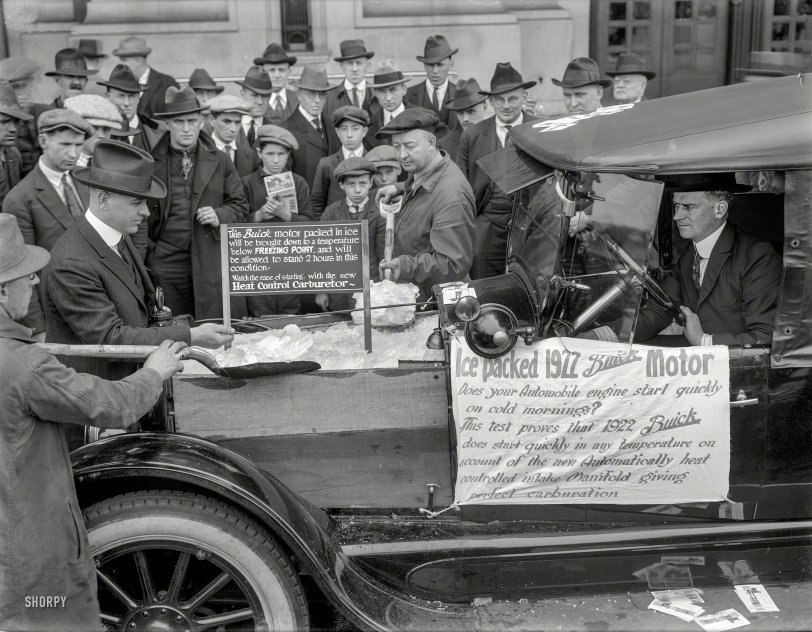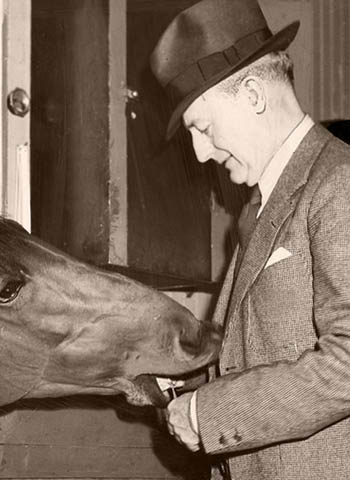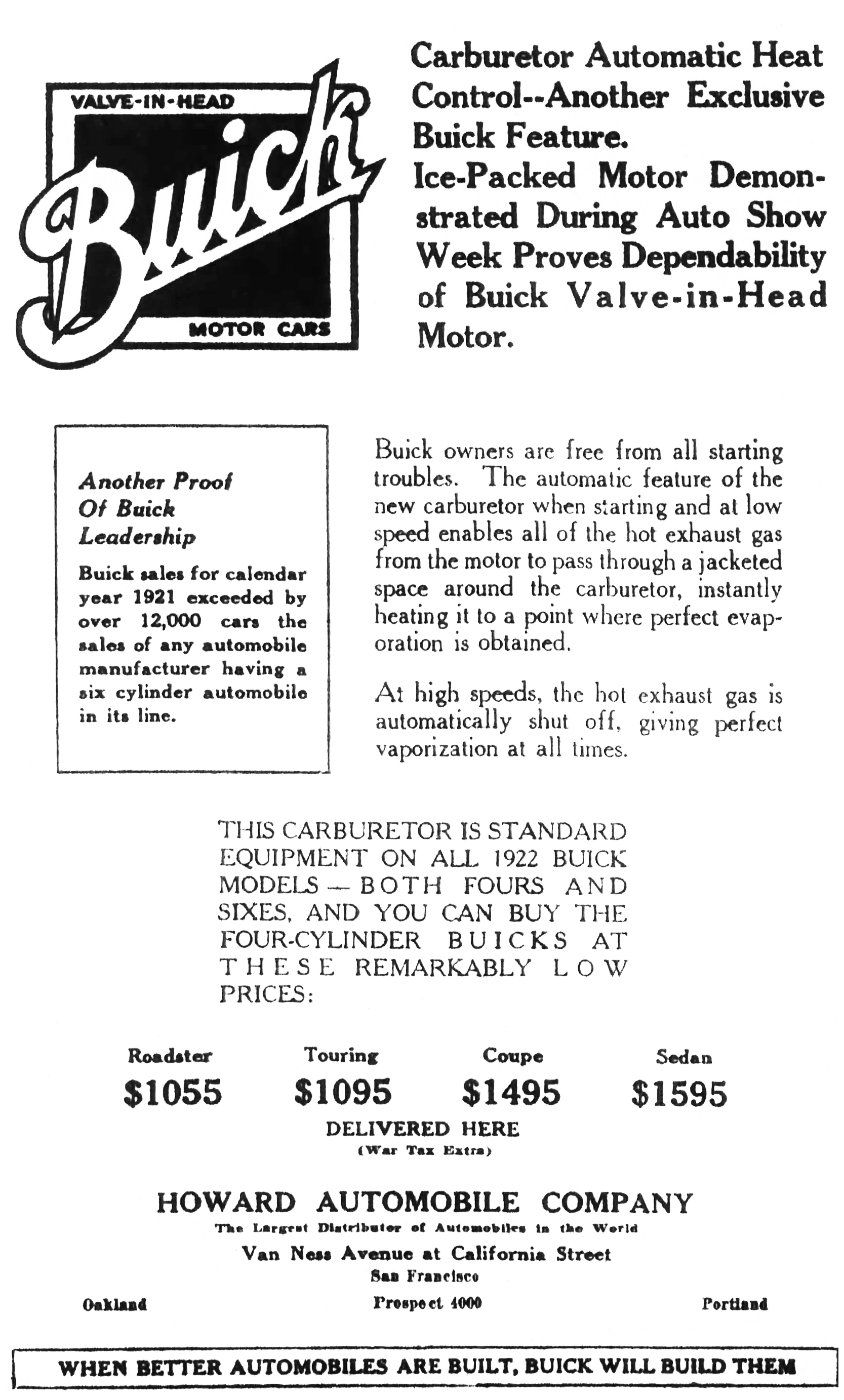


Framed or unframed, desk size to sofa size, printed by us in Arizona and Alabama since 2007. Explore now.
Shorpy is funded by you. Patreon contributors get an ad-free experience.
Learn more.

- Roll your own
- Rugged and real!
- A Charles Purcell - Mama Cass Connection
- Uncle SAAM
- Obfuscation
- One Chocolate Soldier rode away
- Victor Marquis de la Roche
- The Little House Across Way ...
- Vanderbilt Gates
- Vanderbilt Mansion
- You can still see that gate
- Withering heights for me
- So Jim,
- Top Heavy
- Re: Can't Place It.
- Bus ID
- Since you mention it
- The White Pages ?
- Moonlight Tower
- 1907?
- Fire(men) and Water
- Can't Place It
- Can anyone
- Wings
- Where's Claudette and Clark?
- Overbuilt Rolodex
- One song
- Give Me Wings Please!
- PRR
- Pinball Wizards
Printporium
Icebox Buick: 1922

San Francisco, 1922. "Ice-packed Buick motor stunt." A demonstration of the "Heat Control Carburetor." 6½ x 8½ inch glass negative. View full size.
Choke it!
I cut my teeth on carburetors, chokes, accelerator pumps and floats. The passage under the carburetor was great, but the system required that it flow enough exhaust gas to produce the heat to open the choke. Older vehicles tended to burn oil, and this oil went out the exhaust. Some of this oil mixture exhaust was routed through this passage under the carburetor. Over time this oily exhaust would clog up the passage, so the choke wouldn't open as designed. This caused the engine to stall, and further attempts at starting were futile. The spark plugs would be soaked in gas, so they needed to be removed and cleaned or replaced and the passage cleaned out. This usually meant the intake manifold needed to be removed and the deposits chiseled out.
With fuel injection, we take for granted that we can turn the key and the engine will start and run right away with no hesitation. Every now and then I have to work on a carbureted vehicle, and I forget to pump the gas pedal a few times before turning the key.
["Turning the key" -- how quaint! - Dave]
The logic
Gasoline with moisture content can ice up the venturi during cold weather and stop a running engine.
I had a 60's era Chevy which fed a bit of the exhaust gas through a 'crossover' that went under the carburetor for that reason. A bimetal-sprung thermostatic valve would work to close the crossover when the engine was hot.
I still have a 70's era Datsun Z which does not have that feature.
The latter stranded me on an interstate one subzero Christmas Eve in the early 80's due to icing.
As the caption says, this was a stunt and as such would not truly prove their claim.
A pretty common feature
It's basically a manifold heat riser which routes exhaust gases through a passage in the intake manifold, under the carb. It became a common feature on carbureted cars. It really wouldn't help starting though, since it only has an effect once the car is started. But, it does help driveability during warm up.
It's just like making ice cream
Bobu, it may actually be colder than 32 degrees Fahrenheit, if salt is sprinkled on the ice. If you look closely at the gentleman directly in front of the radiator, his outstretched right hand is cupped and appears to have a whitish material in it. I'm betting he's sprinkling salt on the ice as it's being shoveled on the engine...
Hats vs. Caps
Back then, I believe, for men, the hats vs. caps divide was one of class. Blue collar workers, laborers, and such wore caps. White collar workers and the wealthy wore hats. Except for cowboys, of course ;-)
I'm missing the logic...
If the carb used exhaust heat to warm the fuel, what made it a good carb for cold starts? Did it have some kind of fancy automatic choke as well?
Charles S. Howard
I believe the fellow standing in front of the Buick is Charles S. Howard, owner of the Buick dealership in SF and later the owner of the legendary racehorse, Seabiscuit.
[Not with that nose. -tterrace]

All in due time
Five below is when you brought the oil in at night and heated it on the stove the next morning, back in them days. Or just didn't bother with the car. This was a pretty good trick for 1922.
How about bringing it down to 5 below?
It's a nice stunt, but the engine won't get any colder than 32 degrees Fahrenheit. That's not so cold as most winter mornings.
[Not a frequent problem in San Francisco, though. -tterrace]
[Also, while ice can't get any warmer than 32 degrees, it can certainly be colder. The ice in my freezer is kept at zero degrees. - Dave]
Age of Acceptance
Note that with one or two exceptions that caps are worn by the boys and the fedoras by the older guys.
The Driver
looks a tad apprehensive. You can almost read his mind, "Come on, Baby, start!"
It Worked
Nice stunt!
That must have been a very impressive feat, considering how hard it was to start an engine when it got really cold. Assuming, of course, that the oil didn't get as thick as molasses, the spark plug cables didn't short, and the carburetor wasn't flooded with water from the melting ice ...
Do we know if the car started after this automotive version of the ice-bucket challenge?
Lotta cool hats there
Not a bare head to be seen, at least by me. I do like that handy oil can mounted in its own holder there on the firewall. I wonder when those went away. Probably long before all the hats.

























On Shorpy:
Today’s Top 5